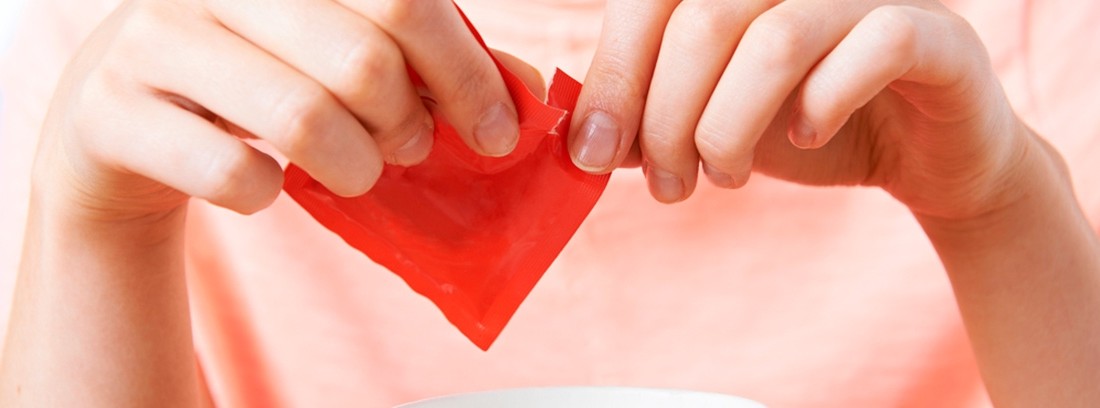Stevia, more than a sweetener

Much has been said lately about the stevia, a plant traditionally used as a food sweetener (or sweetener) and for its healthy properties for diabetics. But much has been said and not always with precision, since there is a lot of confusion between the properties of the plant as such and those of the active compounds that are extracted from its leaves. We are going to try to clarify the question.
- Stevia leaves, being very sweet, are used as a substitute for sugar to sweeten foods.
- It is recommended for people who are overweight, obese, diabetes, cardiovascular problems….
- The most common use of stevia leaves is as an infusion (one teaspoon per cup).
Stevia: the plant
Under the name of Stevia, a genus of plants of the Asteraceae family is known, comprising more than 240 species, of which Stevia rebaudiana Bertoni is the best known and most widely used. This plant is native to South America and was brought to Spain for the first time in the 16th century by Pedro Jaime Esteve, a Valencian doctor, botanist and naturalist, to whom the plant and its genus owe its name, since said scientist signed his works in Latin as Petrus Jacobus Stevus. Likewise, the Bertoni variety receives this name from the surname of the botanist who classified it botanically.
The leaves of this plant are very sweet, so in their countries of origin they have been used since ancient times to sweetening foods instead of sugar, which is beneficial for diabetics.
The main constituents: glycosides
The active part of the plant are the leaves, which contain up to 10% glucosidic heterosides, molecules formed from simple sugars (carbohydrates), and a non-carbohydrate structure called genin or aglycon. The main ones are:
Stevioside, rebaudosides and dulcoside A, which are extracted from the leaves by means of an aqueous extraction process. Once purified, the aqueous extract is recrystallized. These glycosides have a very high sweetening power, they are 250 to 300 times sweeter than a solution that contains 0.4% sucrose, which makes it very interesting as a sweetener for people who have problems of overweight, obesity, cardiovascular problems and all those for whom the consumption of sugar is not recommended.
Steviol glycosides are authorized as sweeteners by the European Food Safety Agency (EFSA) since November 11, 2011. An Acceptable Daily Intake (ADI) of 4 mg / kg of body weight / day has been established. This means that, for example, a person weighing 60 kg can safely take 4 x 60 = 240 mg of steviol glycosides per day. Steviol glycosides are used to make solid (tablets, granules, sachets) or liquid (drops) sweeteners, as well as to sweeten soft drinks, juices and other industrial foods.
The leaf can also be a source of essential amino acids and contains some fatty acids of the omega-6 series, vitamins and minerals, especially potassium which is partly responsible for its diuretic effect.
Traditional uses of the leaves
Stevia leaf is traditionally used in South America for the treatment of diabetes and is marketed as a substitute for sugar in Japan and Brazil for more than 20 years, while in traditional Chinese medicine stevia-based preparations are used for the treatment of hypertension.
The stevia leaf is used in a popular way in infusion: one teaspoon of coffee per cup. Take one or two cups a day. However, studies on its activity as an antidiabetic or antihypertensive have been carried out, not with the leaves but with the extracts, that is, with steviol glycosides.
Studies with steviosides
The studies carried out to determine the possible beneficial action on diabetes or hypertension, with steviosides and the doses used in the two most important studies have been:
The equivalent of 1 g of stevioside in meals, to assess its effect on sugar levels and 250 to 500 mg of stevioside three times a day to assess its effect on hypertension. In these studies, it has been seen that at the aforementioned doses, postprandial glucose (two hours after eating) is reduced, as a consequence of not producing glucose peaks, people feel more full and are not hungry as often.
Likewise, studies on hypertension have seen a decrease in systolic and diastolic pressure, although it has not been possible to determine the mechanism of action.
As can be seen, these doses are higher than those established as safe as sweeteners and in safety studies it has been seen, in experimental animals, that the aqueous extract of stevia, at higher doses than those used as a sweetener, produces and increases diuresis. More studies are needed to determine which are the effective and safe long-term doses.
At the moment, its use as a sweetener at the doses recommended by the manufacturers, which are equivalent to those considered safe by the European Food Safety Agency, in itself reports the benefit of having a pleasant sweetness that allows it to be substituted safely and safely. and makes the sugar added to beverages and food caloric, with the addition of its possible benefits on high blood glucose levels and on.
(Updated at Apr 14 / 2024)